Have you ever wondered what it would be like to sleep in an art museum? Ever had the chance to walk into an abandoned house only to find a two-story replica of the Statue of Liberty? Posed with a pumpkin covered in dots at the edge of the sea? Found yourself surrounded by Monet’s “Waterlilies” on every wall in an underground museum? What about bathed naked while staring at a large fake elephant? All of these experiences await you should you make the effort to travel to Naoshima, Japan’s art island in Okayama Prefecture in Western Japan.
Getting to and Arriving in Naoshima
The first thing that you notice when you get off of the ferry in Naoshima is Yayoi Kusama’s “Red Pumpkin,” constructed in 2006. This along with the shuttle buses proudly displaying one of two of Kusama’s “Pumpkins” are the first indications that you have arrived on Japan’s art island, the brainchild of architect Tadao Ando, a Japanese corporation called Benesse Holdings that focuses on correspondence education and publishing, and the Fukutake Foundation, who opened the first museum on the island called Benesse House in 1992. Over nearly 25 years, the number of museums and art projects on this quiet island has been steadily growing, giving visitors more and more reasons to explore.
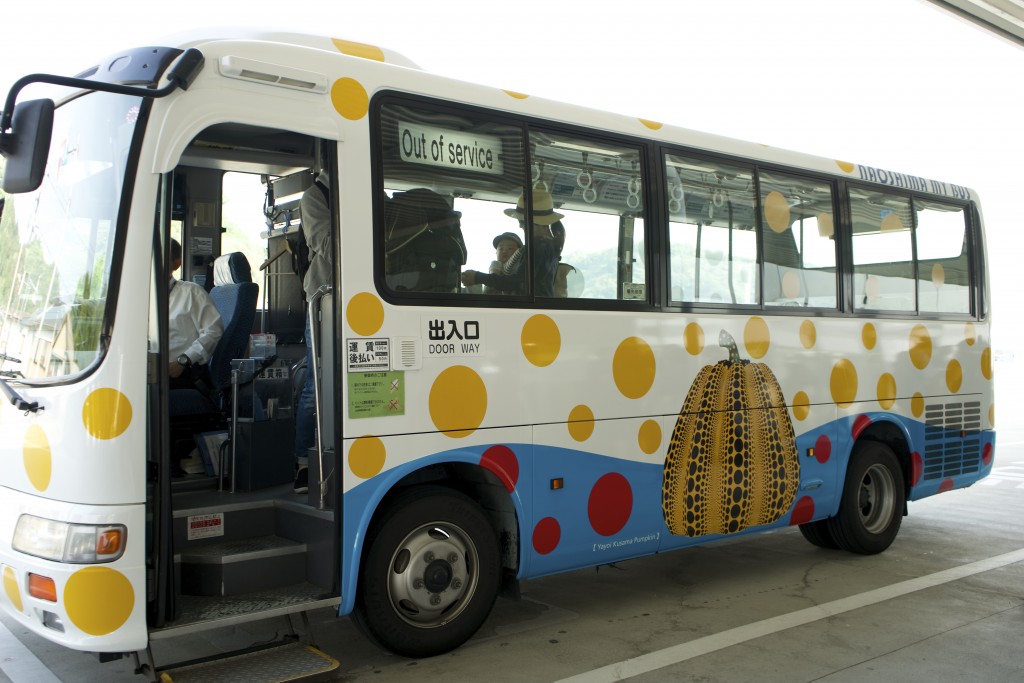
Get on the Pumpkin Bus to get to the museum
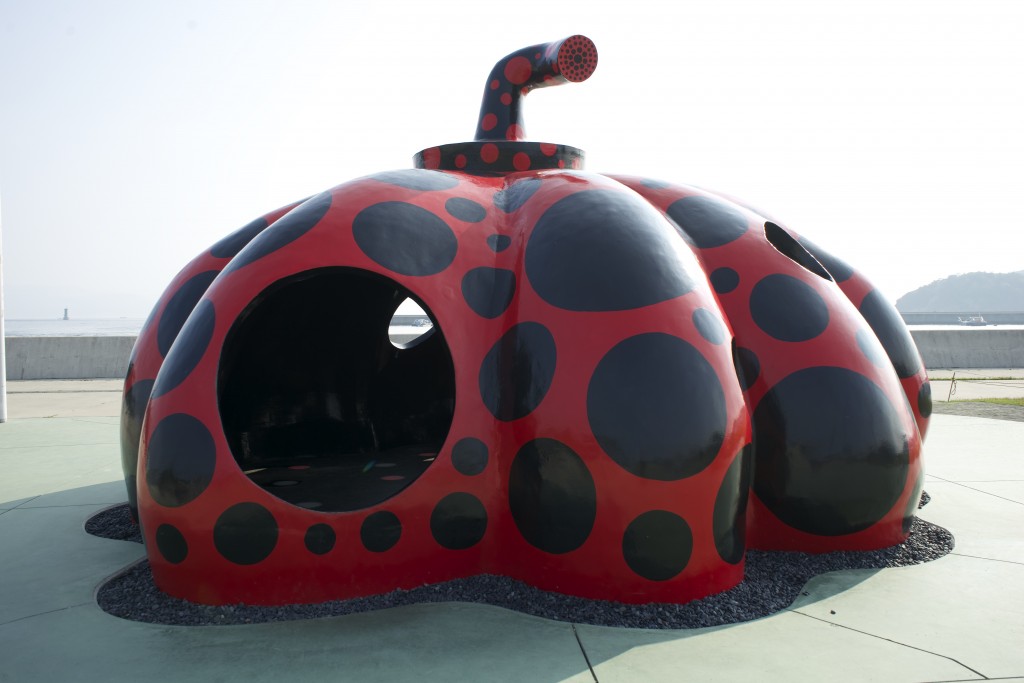
Yayoi Kusama’s “Red Pumpkin”(2006)
I arrived at Miyonaura Port on Naoshima at 10:30am after taking the bus from Okayama Station to Uno Station (a one-hour train is also available but a huge train delay that morning caused me to re-route and take the bus) and caught the next shuttle bus for 100 yen (the cost of each bus ride that takes you around the small island, bikes are also a popular way to get around and will cost you around 1,000 yen to 1,500 yen for the day). Both Okayama station and Uno Station are accessible using a JR Rail Pass at no extra charge. A bullet train from Tokyo to Okayama takes about 4 hours and 20 minutes. From Osaka, it takes about 1 hour and 40 minutes.
Honmura, old Japanese Houses, and the Ando Musuem
I ended up on the eastern side of the island first in an area known as Honmura. Since 1998, this has been the site of the “Art House Project,” which is a collection of exhibitions, scattered around the Honmura district, which are contemporary art exhibits inside of old-fashioned Japanese houses. You first need to stop at the Honmura Lounge and Archive where you can purchase access to all six sites for 1,030 yen or 410 yen for a single-site ticket. This price does not include the Ando museum, which is also in the Honmura district and is an additional 510 yen. As world-renowned Japanese architect Tadao Ando built the majority of the art sites on the island, I figured it was worth going to this museum as well.
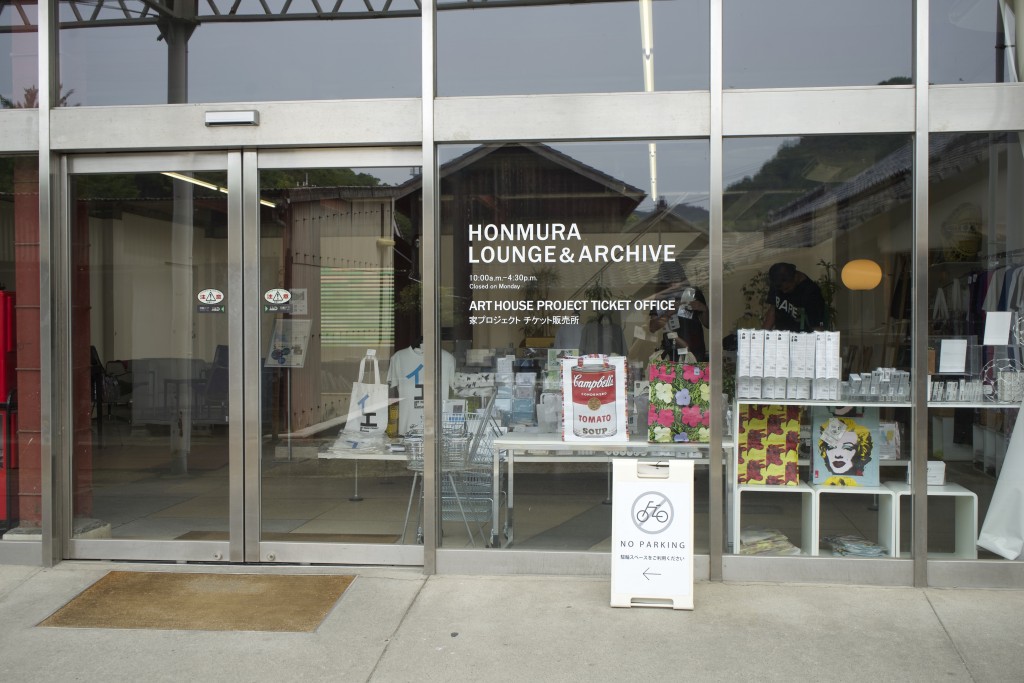
Buy your ticket here for Honmura Art House Project
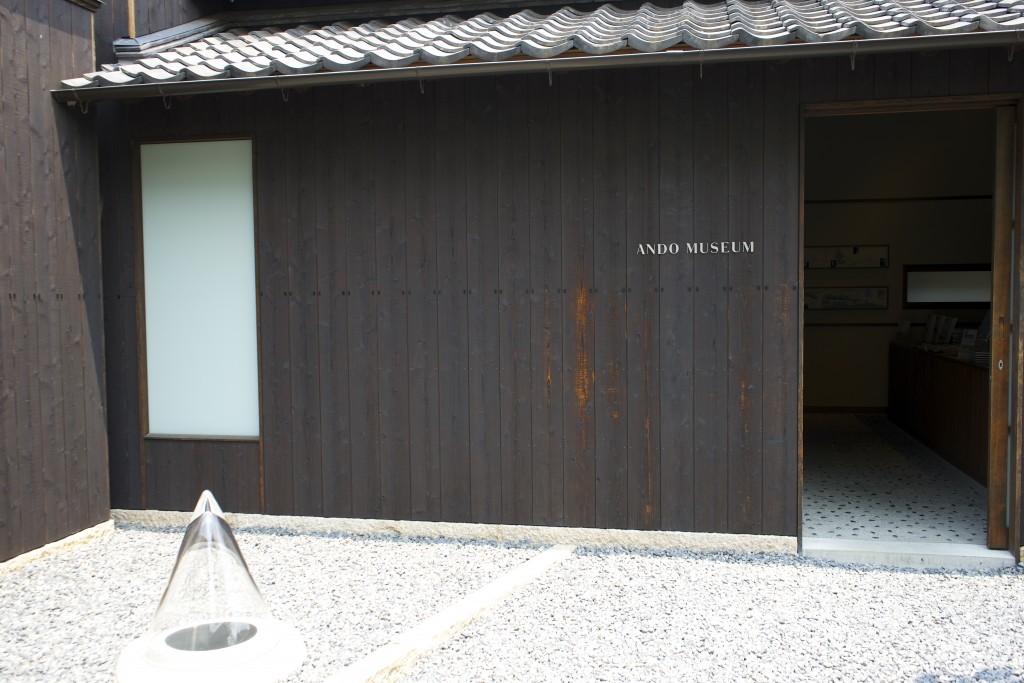
The Ando Museum provides you with the background and inspiration for Tadao Ando’s designs on the island
I was told to start with the Minamidera house designed by Ando himself in 1999, as this is the only site in this area that allows only a limited number of people in at a time and can cause visitors to wait in a line to enter. Even if you have to wait, however, the Minamidera House is worth the wait for the unique experience that American artist James Turrell has created with the space. Once inside the house, you soon find yourself in complete darkness, guiding yourself forward by brushing your hand along the wall and finding the corners to enable yourself to turn and not smack your face into the concrete. For five full minutes, you sit in darkness while your eyes slowly adjust to the light. Once you have adjusted, you are then guided to the front of the room, and the rest I will leave as the surprise that awaits you.
I went to four other sites in this area and each has something to delight and surprise you. “Kodaya” is a 200 year-old house that has been outfitted with a pool of water inside that displays 125 digital LED counters in red, green, and orange counting up and down at random, the pace of which was set by an island resident. Don’t miss the window in this house on your way out. Its liquid crystal display will have you guessing how it works as you watch the numbers inside a seemingly glass window constantly change. “Ishibashi” has a large room with a wonderful wall covered in waterfalls that makes the entire space seem serene in a way that is difficult to describe. “Gokaisho” is small but sweet, built where a gathering place for “go” players once stood. Artist Yoshihiro Suda placed several wooden camellia and a bamboo piece in one room and another room tatami straw-mat floor has only a “kekkai” or place to define boundary, bamboo that has been carefully carved by the artist himself. “Haisha” was my other stand-out favorite here and is set apart from the others five minutes up a hill past the district’s post office. Once the home and office for a local dentist, it has been entirely transformed by artist Shinro Ohtake (2006) into a sculptural/graphic work of art. Imagine an entire house gutted and left to the imagination of an artist with a penchant for making use of a wide range of materials to visualize his dreamscape including scrapped ships, steel towers, his paintings, and collage techniques. I found “Haisha” oddly delightful and was not surprised later to learn that Ohtake had also designed the bathhouse “I Love Yu” (2009) a five-minute walk from Miyonaura port (and a great place to stop and refresh yourself before getting back on the ferry to Uno. This bathouse was the most surreal bath that I’ve had in Japan, as it really did include an elephant standing proudly on the barrier between the men’s and women’s respective sides of the bath. There was also some impressive tile work both above and on the bottom of the bath itself. I think that “I Love Yu” is not to be missed.
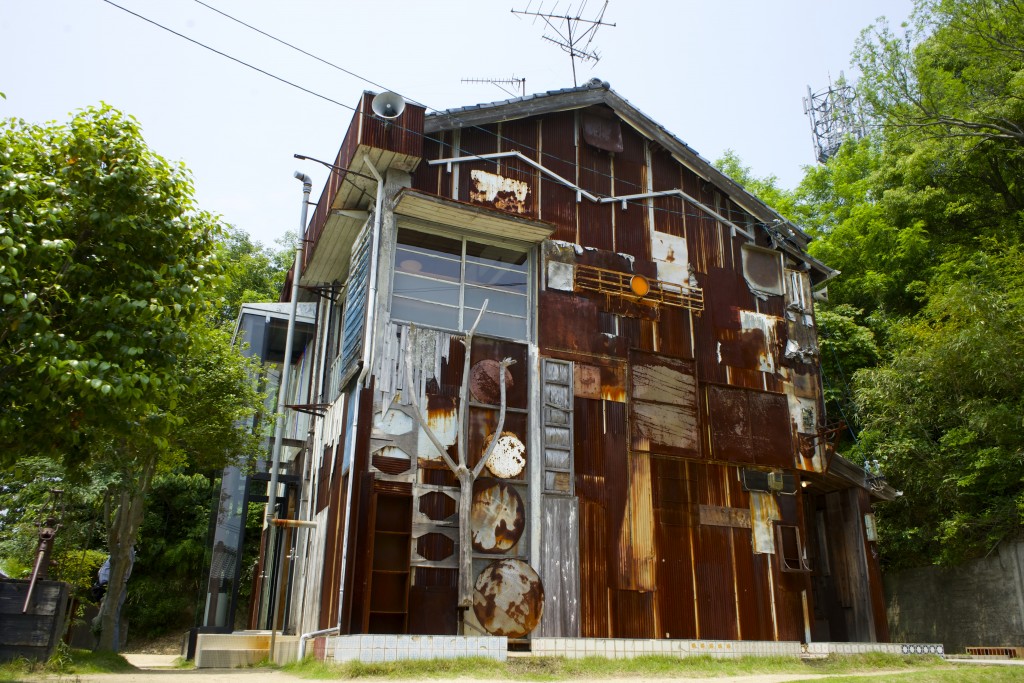
“Haisha” – my second favorite of Art House Project houses. This is a must-see with a special surprise waiting inside.
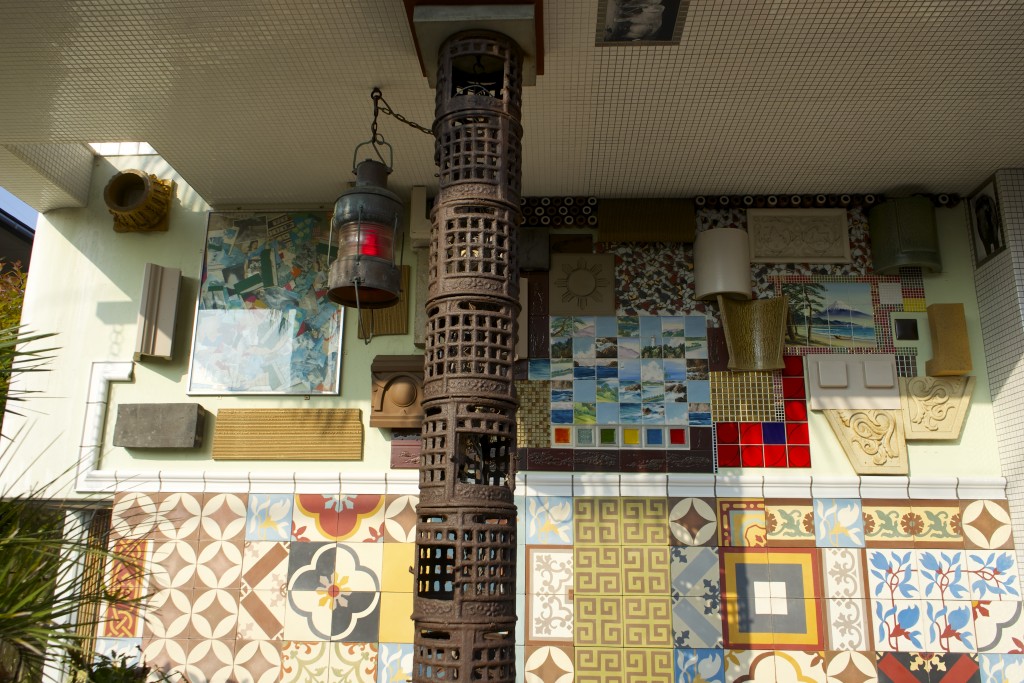
The “I Love Yu” bathhouse (Yu is a play on the Japanese word for hot water)
Feeling Monet at the Benesse Art Site
After being absolutely delighted by the Honmura district, I got back on the bus and got off on the last stop of Tsutsuji-so and then took a shuttle all the way to the furthest museum in this Benesse Art Site part of the island called Chichu Art Museum (est. 2004). This is by far the most expensive museum on the island at 2,030 yen but is also the most impressive in my opinion, as even the construction of the museum itself by Tadao Ando is a work of art. The museum was constructed out of concrete, steel, glass, and wood and consists of three underground levels, as Ando refused to have any exterior design rising out of the ground. This unique design requires viewers to walk up and down a series of ramps encircling the exteriors of various rooms ponds of bamboo, sections open only to the sky in which you walk along an isosceles triangle cut out of the wall, making each corner that you turn look different. Perhaps this is what Ando was going for—nothing appearing as it seems depending on the angle, the time of day, the light. There are only three artists on display in this museum, but I found the admission fee completely worth the price once I experienced the exhibits themselves (although I found myself not as thrilled with the De Maria, but I’ll let you be the judge).
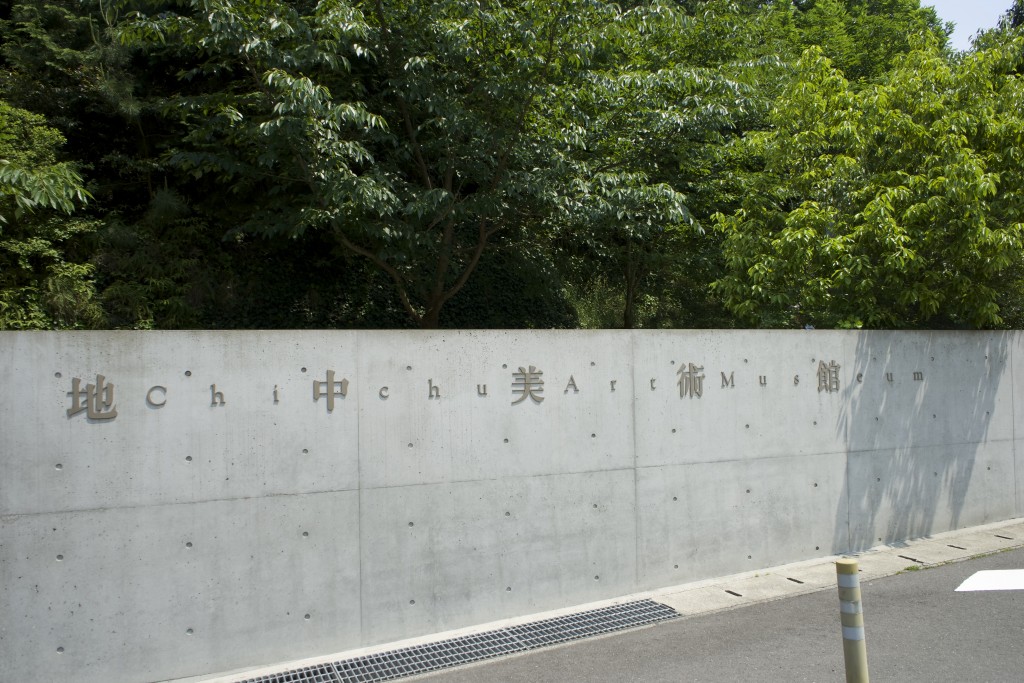
The best of the Benesse Site Museums – do not miss it!
After walking through half of the museum, in awe of the architecture, you finally reach a dark room. To your right is the Monet room, in which you are instructed to take off your shoes and place them on a white rack in exchange for white slippers. The slippers seem to glide along the small mini white tiles with barely perceptibe black borders. The Monet room can’t be seen until you walk around a white column seemingly designed specifically to delay the effect of seeing the paintings themselves until you are in the perfect room in which to view them. Once you cross a small entirely white room, you walk through the open entrance and suddenly you see them—five different Monet paintings altogether spread across four different walls, all different versions of “Water Lilies.” I have to admit that as soon as I saw the first Monet, I realized that I had perhaps seen a Monet painting one other time in my life, the context being one painting in a bright, busy museum somewhere else in the world. I knew that I had never seen more than one, let alone five altogether, and in such a unique space, made visible entirely by natural lighting from above while being viewed underground. It was a dim yet hallowed space. I couldn’t stop staring at them, moving back and forth, closer and further away. There I was with the Monets on an island that felt like it was in the middle of nowhere, underground on a Friday afternoon, just me and an elderly Japanese couple, the wife of the two shuffling around in her slippers whilst gripping her yellow scarf whenever she turned a corner, never letting her husband far from her sight. In the corner was one small female Japanese museum attendant, no older than 25. I went over to her and asked her in Japanese, “How much do you think all of these paintings are worth?” She quickly inhaled, paused, and replied with slightly accented English, “Priceless,” she said. Go see the Monets and you’ll see what I mean. It is somehow a moment that I will never forget–the simplicity of nature and its effortless beauty under the familiar Monet signature underground yet somehow shining.
Next door to the Monets is a different experience altogether, yet no less unforgettable. Created by James Turrell, the same artist that created the dark room in the Minamidera house on the other side of the island, the main attraction here is an interactive exhibit called “Open Field,” in which you are again instructed to take off your shoes and then enter a dimly lit white room with a plain set of black stairs leading up to a screen. I don’t want to spoil the rest of the experience for you here, as the magic of this exhibit was in not knowing what was coming next. Suffice to say, I wouldn’t miss it, and I would wait as long as it takes, as they allow only a certain number of people into the room at a time.
Lee Ufan – Better Viewed from the Outside
The next museum in the Benesse Art Site, the Lee Ufan Museum is a ten-minute walk from the Chichu Art Museum and is also the newest on the island, opened in 2010. It costs just over 1,000 yen to get in, but, honestly, I don’t think it’s worth the money. The museum is very small, consists of only a few small rooms and consists of exhibits with one single metallic ball or a single brushstroke on a painting (things you will believe that you could create yourself). I don’t know. Maybe Ufan’s minimalist, abstract style is just not for me after seeing the Monets so soon before, but I would skip it if you’re in a rush and just admire the outside courtyard. I was inside for all of ten minutes.
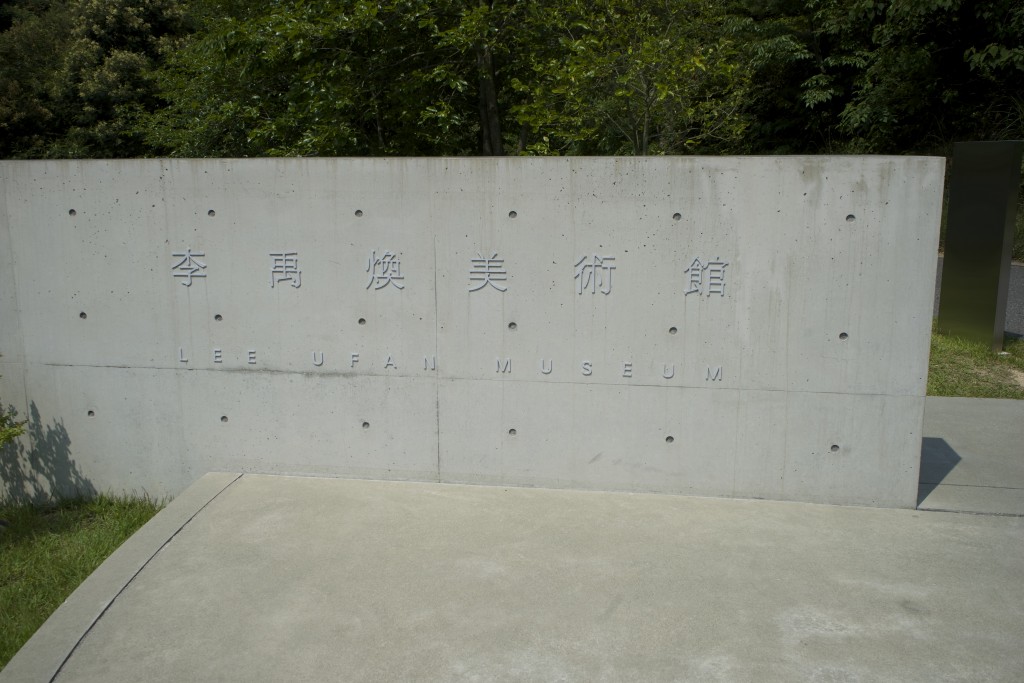
I appreciate what Lee Ufan was going for here, but it not worth your 1,000 yen, in my opinion!
Night at the Museum
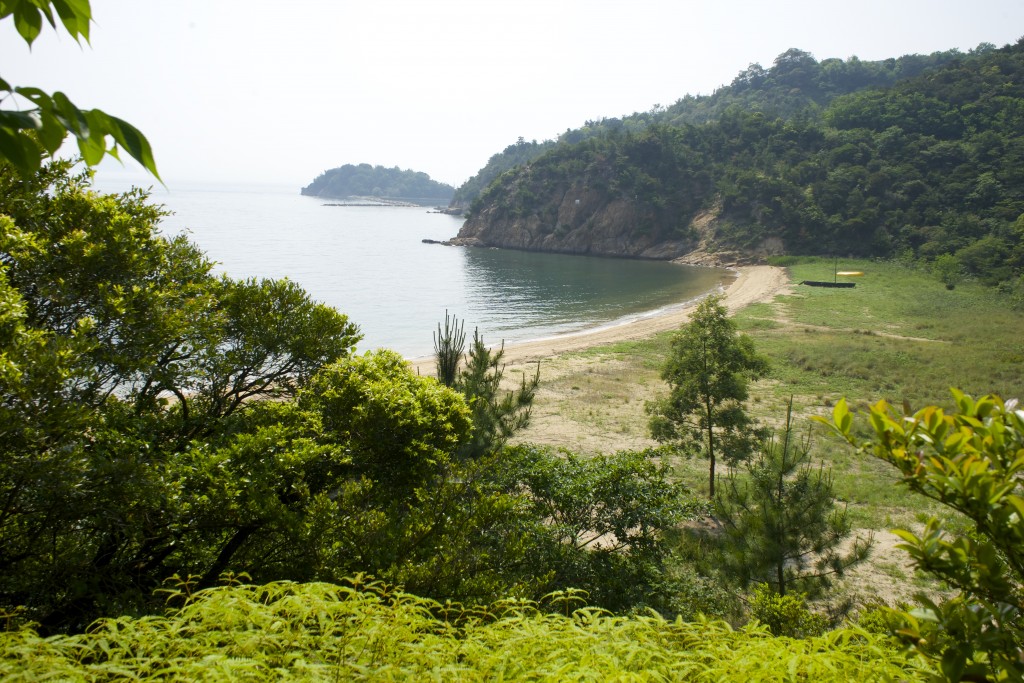
Naoshima is gorgeous all on its own – This is on the walk between Lee Ufan and Benesse House
Ten minutes further past the Lee Ufan museum is the Benesse House, the first museum on the island, also designed by Tadao Ando. The unique thing about the Benesse House is that it’s also a hotel. There are actually four sections of the museum where guests can stay: Museum (opened in 1992), Oval (opened in 1995 and connected to the Museum by monorail), and Park and Beach, added in 2006. The Museum is the only section where visitors can see paintings, and hotel guests can visit the Museum until 11pm and don’t need to pay for the museum admission separately. The Benesse House was my third favorite part of Naoshima after Chichu and the Honmura district with the six different houses. It felt more like a typical museum in its design and had some interesting modern art pieces. I especially liked the “Three Chattering Men” (look out for them, you really can’t miss them). The minimum cost to stay for one night in the cheapest part of the four hotel buildings of Benesse House is almost 30,000 yen (about $270). After having a look around, I can honestly say that, while it may be a singular experience, I much preferred staying in Okayama, about 1.5 hours, or may even suggest finding alternative accommodation in a place that would have more dining options. It likely provides a relaxing experience, but I felt that there plenty of ferries coming and going back to Uno station on the mainland if one decides to only make a day trip out of it. Note: there are other accommodations on Naoshima including a popular place near Yayoi Kusama’s most famous “Pumpkin” (1994-2005) called “Tsutsujiso Lodge” that offers trailer or Mongolian-style tent facilities: http://www.tsutsujiso.com/english/accommodations/ This website provides little English and accommodations seem to book out well in advance, so you may want to have your Japanese friend or tour guide book ahead for you on this one. Meals are also going to need to be ordered in advance.
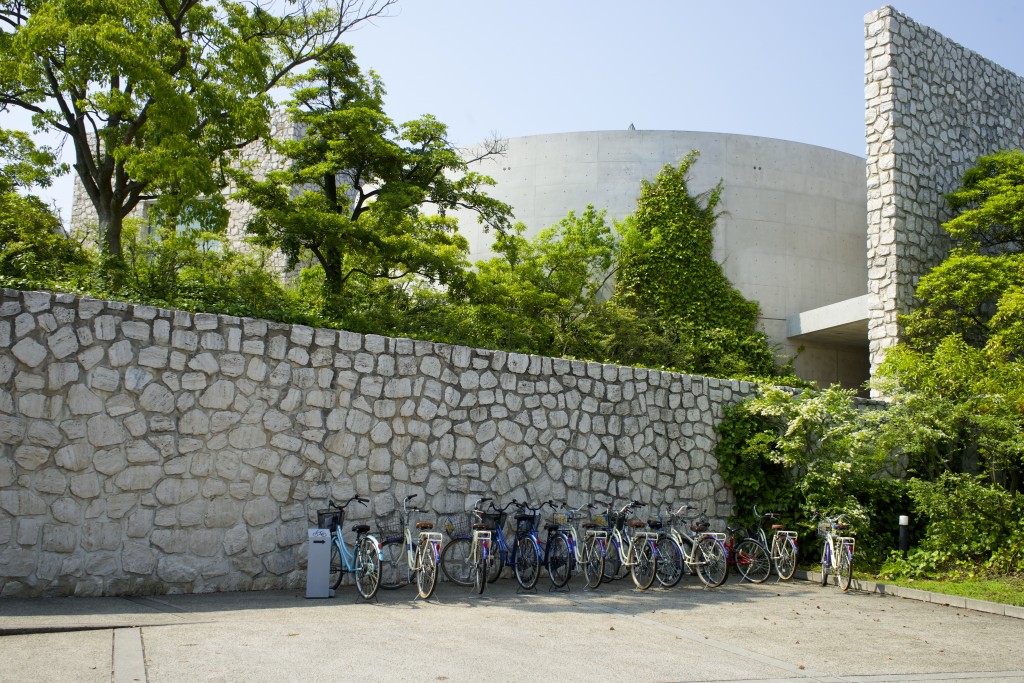
Entrance to Benesse House, main museum building.
Don’t Miss That Pumpkin
After Benesse House, I walked along the beach and reached Yayoi Kusama’s famous “Pumpkin” and got in line to take the obligatory photos. This pumpkin is almost like the Eiffel Tower of Naoshima Island. It is the iconic photo to get. Once I’d posed with the pumpkin, I got back on the bus at Tsutsujiso and went back to Miyanoura Port for a quick dip at the “I Love Yu” bathhouse, which I mentioned above and highly recommend. You will need to pay for a towel and soap if you do not have them with you. Admission with the towel and soap is around 1,500 yen, but the place is so trippy that I think it’s well worth it.
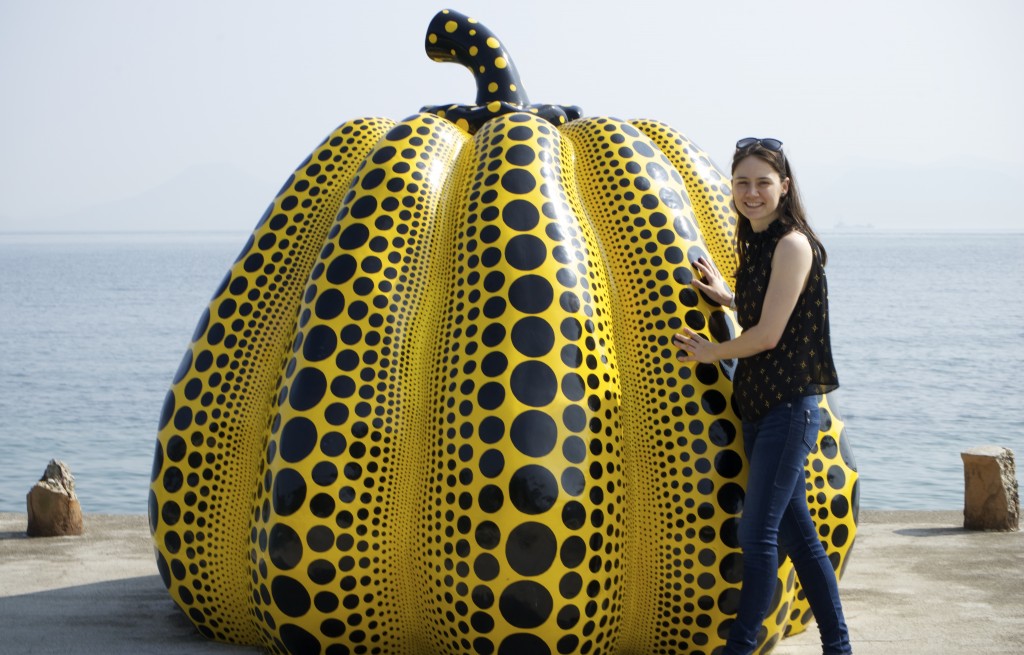
The iconic photo
Until Next Time, Naoshima
My trip to Naoshima is one that I will never forget and I felt like I was able to get back in touch with art in its various forms in a way that I haven’t for a long time. There are so many little corners of this island to explore, and the island will continue to evolve and add more exhibits and sculptures over time. Naoshima already seems popular with Chinese tourists, but I don’t know if Western tourists are as familiar with it or don’t make the trip over from Osaka and Kyoto very often. If you are an art lover, I would say that Naoshima is not to be missed. There is certainly no place like it in the world, and with art projects continuing to be developed on neighboring islands in the Seto Island Sea, it is a place that you may even find yourself returning again and again.
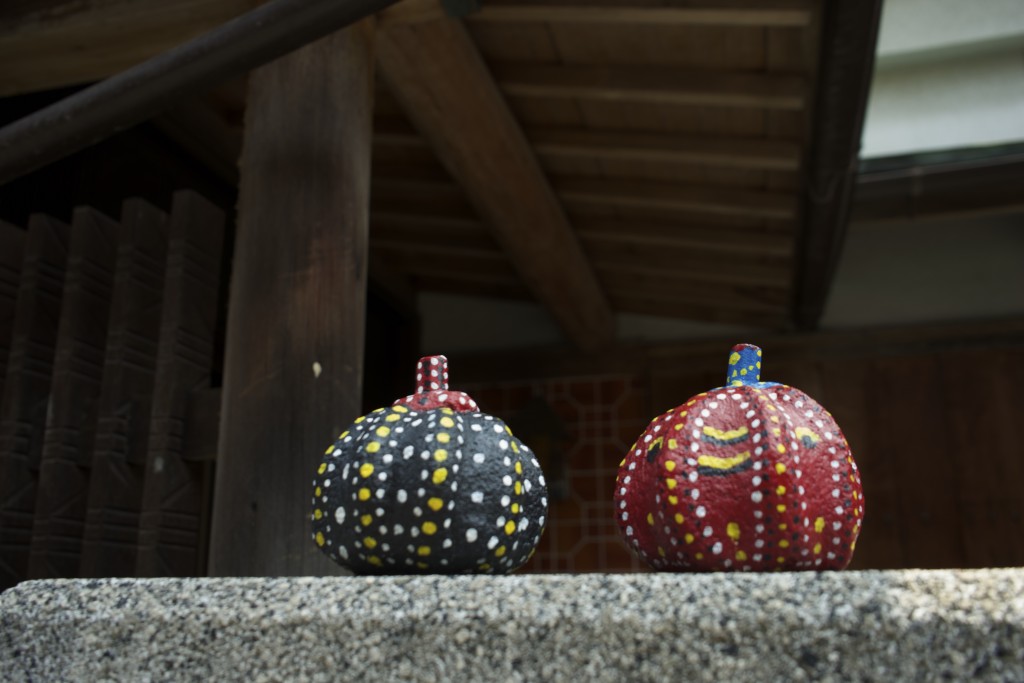
Kusama pumpkins in miniature spotted at a local residence in Honmura
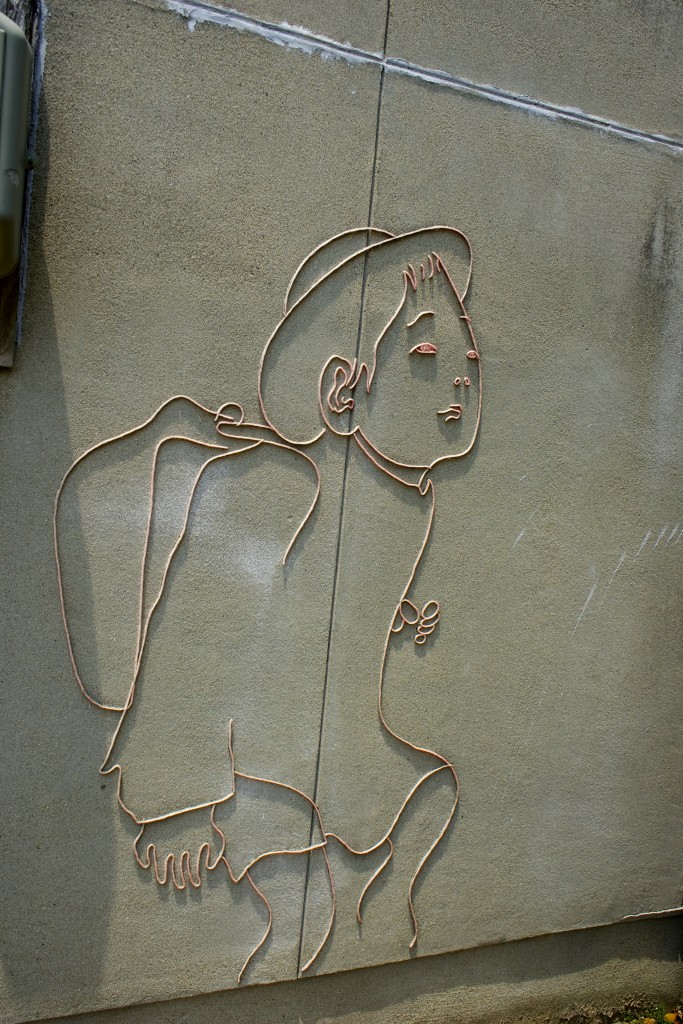
Art is around every corner in Naoshima
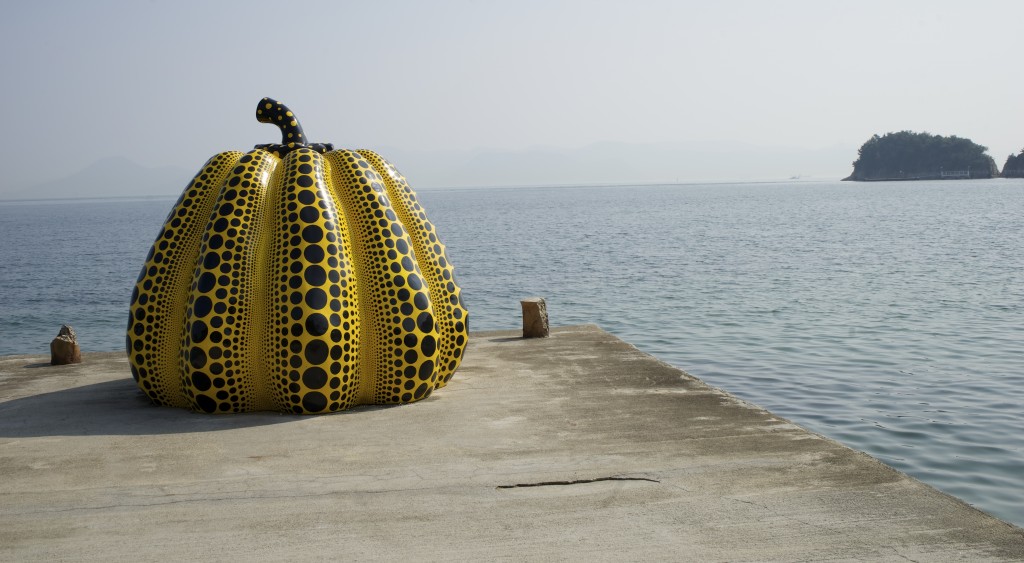
One more before we go…

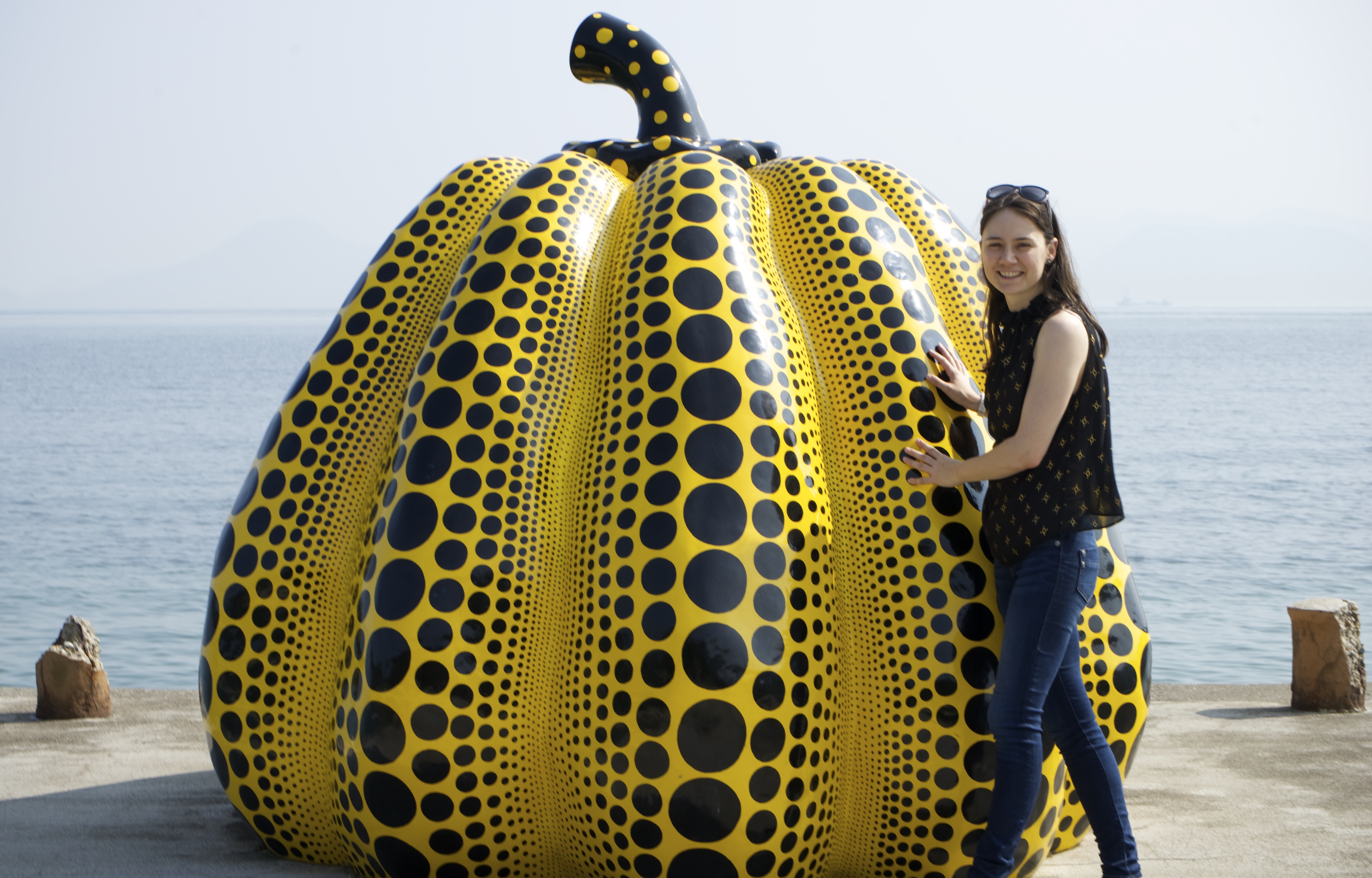
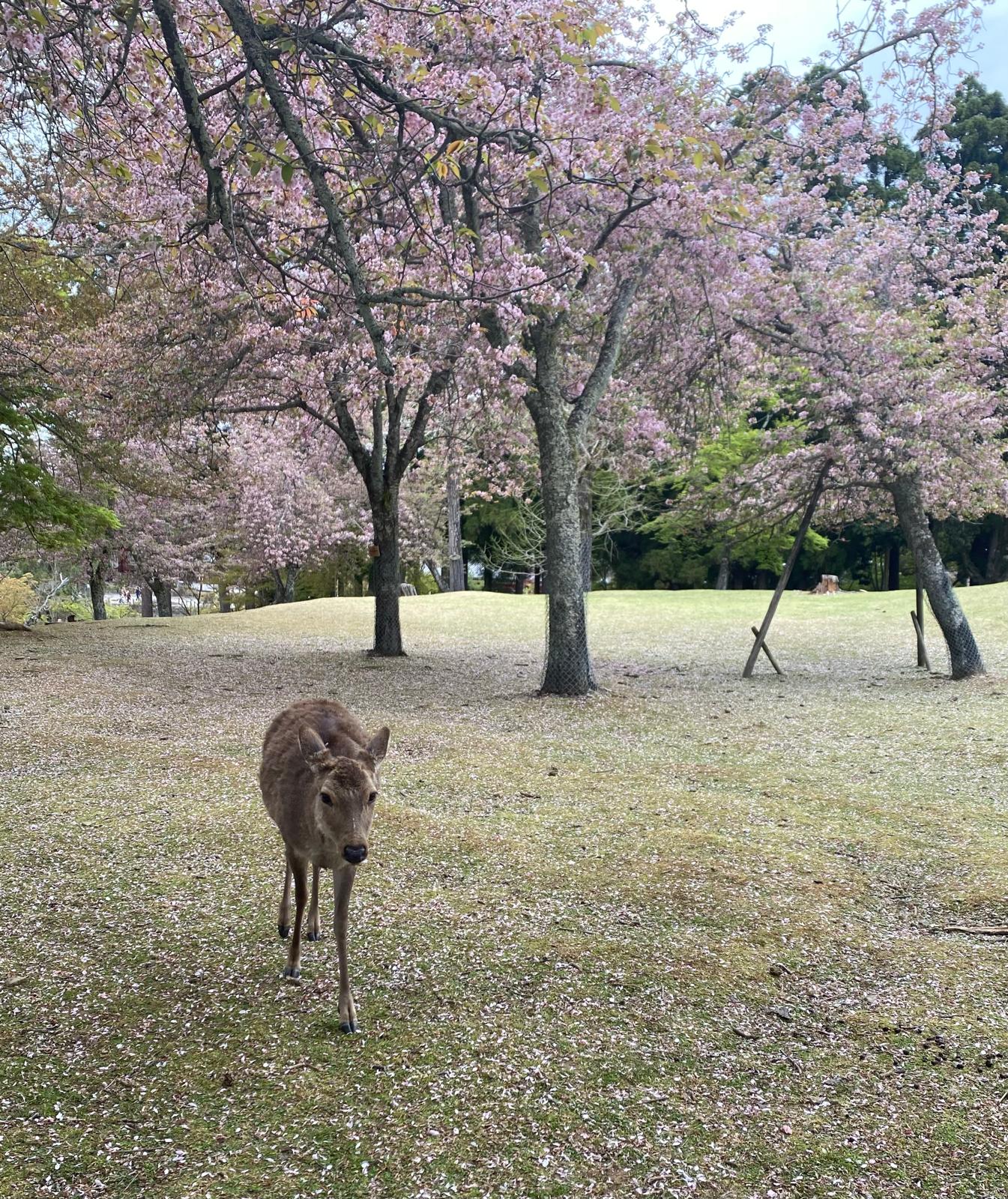
0 Comments